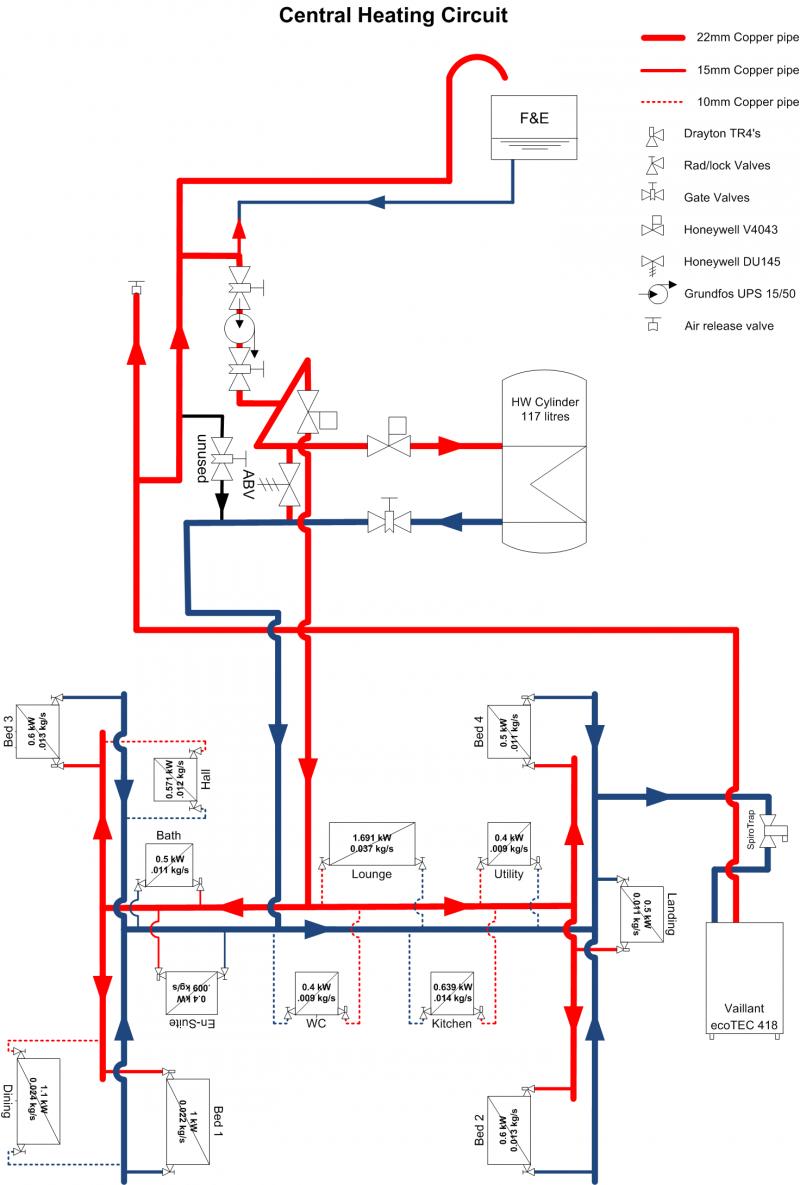I've now measured the vertical drop between boiler and pump which is 2.4m. If I look at the Grundfos specs, a 2.4m head gives the following flow rates to the boiler:
Speed I = 0.75 m3/h
Speed II = 1.5 m3/h
Speed III = 2 m3/h
Does this mean the best setting to acheive the biggest drop at the boiler would be Speed I, giving 0.75m3/h or 12.5 L/min flow @ 12kW?
The CH just came on so I watched d.40 and d.41 as it heated up.. There was a 16C difference all the way upto the point where the boiler reached max temp (I'd upped d.5 to 58C to help with the DHW until I get the VRT392 which allows seperate temps). So when d.40 (flow) reached 58C, d.41 (return temp) was at 42C. d.41 then rose as the room stat approached the set temp (20C) to eventualy match d.40.
As a quick test, when flow was at 56C, I switched the pump to Speed I and withen a few seconds the boiler was 'eractically' modulating up / down (i.e. the symptoms micky suggested as not enough flow) so I switched it back after 30 seconds. So, I will stick with speed II at the pump as the minimum. (Thanks Micky for that valuable info!!)
Now would like to work out what my max difference could be with those flow rates?? (anyone know the calc?) ... Then see if I can achieve it!



